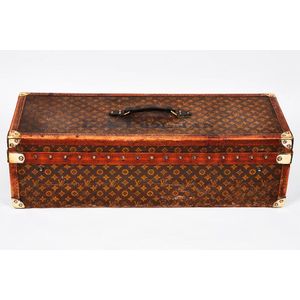George III Mahogany Tea Caddy with Lion Paw Feet
You must be a subscriber, and be logged in to view price and dealer details.
Subscribe Now to view actual auction price for this item
When you subscribe, you have the option of setting the currency in which to display prices to $Au, $US, $NZ or Stg.
- Lion Mask - The lion mask has been used for centuries in various forms of art and design, including furniture, silver, and ceramics, and is usually y depicted as a stylized representation of the face of a lion, often with an open mouth and protruding tongue. and is often used as a handle, knob, or other decorative element.
In furniture design, lion masks were popular in the neoclassical and Empire styles of the late 18th and early 19th centuries. They were often used as decorative elements on the legs or arms of chairs, as well as on cabinet and drawer pulls. It was also used as a handle, knob, or other decorative element.
In silverware design, lion masks were often applied to tea and coffee pots, as well as on candlesticks, snuff boxes, and other small silver items. The lion mask was often used in combination with other neoclassical motifs, such as laurel wreaths or acanthus leaves, to create a sense of grandeur and classical elegance.
In ceramics, lion masks were often depicted in relief, and were sometimes used in combination with other decorative elements, such as garlands or swags. - George Iii - George III (1738 - 1820) was King of Great Britain and Ireland from 1760 to 1820.
- Boxwood - Boxwood is a hard, yellow coloured, close grained timber. In the 19th century it was often used for inlays, especially stringing, because of its contrasting colour to the darker timbers of the carcase. Stringing is the inlay of a narrow strip of veneer of a lighter colour, such as boxwood along or close to the edges of an object that has been veneered in a darker timber such as mahogany.
Because of its fine grain and resistnce to splitting or chipping it has also been used for treen, turnings, carvings and other small wooden items, such as chess pieces. - Mahogany - Mahogany is a dense, close grained red-coloured timber from the West Indies and Central America. It was first imported into Europe in the the early 18th century and its use continued through the 19th century. It was popular for furniture making because of its strength, the wide boards available, the distinctive grain on some boards, termed flame mahogany and the rich warm colour of the timber when it was polished.. The "flame" was produced where a limb grew out from the trunk of the tree, and this timber was usually sliced into veneers for feature panels on doors, backs and cornices.
Some terms used to describe mahogany relate to the country from which it originally came, such as "Cuban" mahogany, "Honduras" mahogany etc. However unless the wood has been tested the names assigned are more a selling feature, rather than a true indication of the timber's origin.
This item has been included into following indexes:
Visually similar items

Three sarcophagus shaped tea caddies, 19th century, each of varying size, two raised on bun feet with ring handle details, the other with Tunbridge inlay, 20 cm, 16.5 cm and 13.5 cm respectively

A mahogany Georgian wine cooler. Sarcophagus form, the hinged top enclosing the original lead liner, raised on scrolled feet. 46 cm high, 68 cm wide, 47 cm deep

Chinese Huanghuali two-tiered food box, 19th/20th century, comprising two plain trays and a domed cover, all contained within a sinuous carrying-handle decorated with pierced phoenix brackets. Height 22.5 cm, width 25.5 cm, depth 17.5 cm

Louis Vuitton, Encyclopaedia Britannica library trunk c. 1911, monogram canvas, leather trim reinforced with brass rivets, leather carrying handle to top, aged brass hardware to corners and trunk latches to sides, stamped 'Specially made for the Encyclopae
